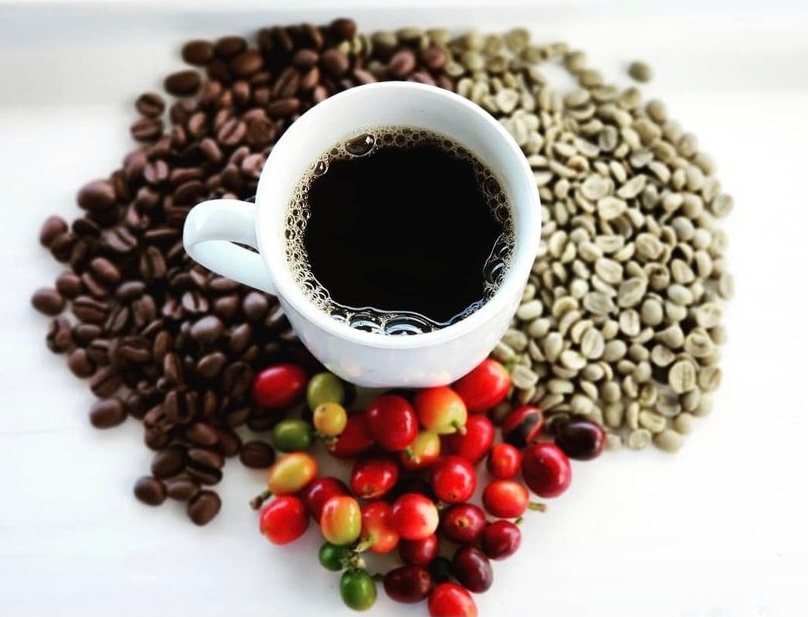
“Brew Your Best Cup”- Coffee Brewing Workshop
Heavenly Hawaiian Coffee Farm • Farm • Holualoa, Island of Hawaii • Hawaii

Food in Central Oʻahu tells the story of plantation life better than any museum exhibit. The Hawaiian plate lunch tradition was born when workers from different cultures shared their home cooking during lunch breaks. Today, it's become an icon of local culture—a delicious symbol of how diverse influences created something uniquely Hawaiian.
The classic Hawaiian plate lunch consists of three essential components: two scoops of white rice, one scoop of macaroni salad (locally called "mac salad"), and a generous portion of an entrée. This combination might seem random, but it reflects the practical needs of plantation workers who needed hearty, filling meals that provided energy for physical labor.
The staple of Asian workers, especially Japanese and Chinese
Portuguese influence, adapted to tropical conditions
Varied based on cultural backgrounds and available ingredients
The plate lunch became a symbol of Hawaiʻi's melting pot culture because it combined elements from multiple ethnic traditions into something new and distinctly local.
This local institution has been serving authentic plate lunches for decades. Their specialty is mixed plates featuring multiple proteins—typically Kalbi (Korean-style BBQ short ribs) paired with BBQ chicken or another local favorite.
Their Meat Jun is legendary among locals—thinly sliced beef dipped in egg batter and pan-fried until golden. It's comfort food that reflects the Korean influence in Hawaiian cuisine. The generous portions and reasonable prices keep working families coming back generation after generation.
For traditional Hawaiian foods served plate lunch style, Highway Inn is the gold standard. Their Hawaiian Plate typically includes:
This is where you can taste foods that predate plantation influence—dishes that connect directly to Native Hawaiian traditions.
Okazuya represents the Japanese influence on local dining—a style of restaurant serving various pre-made dishes that customers can mix and match. Matsumoto's offers both traditional Japanese items and Hawaiian adaptations.
Popular choices include teriyaki beef, fried chicken, tonkatsu (breaded pork cutlet), and various vegetables prepared Japanese-style but adapted to local tastes. The beauty of okazuya dining is the variety—you can try multiple dishes in one meal.
A Hawaiʻi institution since 1961, Rainbow Drive-In represents the evolution of plate lunch culture. Their signature Mixed Plate usually features BBQ beef, mahimahi (local fish), and boneless chicken, often served with their famous gravy covering everything.
Rainbow Drive-In shows how local food culture continued evolving beyond plantation days, incorporating new influences while maintaining the essential plate lunch format.
Fresh raw fish (usually ʻahi tuna) seasoned with salt, seaweed, onions, and other local ingredients. Traditional poke reflects Native Hawaiian food traditions, while modern variations incorporate influences from Japanese sashimi culture and contemporary fusion cuisine.
Though associated with North Shore food trucks, garlic shrimp originated from Filipino cooking techniques adapted to abundant local shrimp. The prawns are typically sautéed with lots of garlic, butter, and local seasonings.
Beyond plate lunch presentations, you'll find kālua pork in tacos, sandwiches, and other modern preparations. The traditional cooking method—wrapping seasoned pig in ti leaves and cooking it underground for 12+ hours—creates incredibly tender, smoky-flavored meat.
Many restaurants serve "local-style" breakfast featuring rice, eggs, and Portuguese sausage or Spam. This reflects the practical adaptation of American breakfast traditions to local ingredients and tastes.
No visit to Central Oʻahu is complete without trying the famous DoleWhip soft serve at Dole Plantation. Made from real pineapple, this treat has achieved cult status among visitors and locals alike.
Though more associated with other parts of Oʻahu, you can find good shave ice in Central Oʻahu. The fine, fluffy ice topped with flavored syrups traces back to Japanese immigrants who adapted their kakigōri tradition to local tastes.
Green World Coffee Farm and other local roasters offer coffee that showcases Hawaiʻi's growing coffee culture. Central Oʻahu's volcanic soil and climate create ideal conditions for coffee cultivation.
For visitors wanting to understand traditional Hawaiian food culture, this Central Oʻahu lūʻau offers more than just entertainment. The experience typically includes:
Several markets in Central Oʻahu offer opportunities to buy local ingredients and prepared foods. This is where locals shop, providing insight into daily food culture beyond tourist-oriented restaurants.
Hawaiian plate lunches are notoriously large. Don't be surprised if one plate feeds two people, especially children. Many restaurants offer smaller portions or allow sharing.
Local restaurants often run out of popular items, especially during lunch hours (11:00 AM - 1:00 PM). Arriving earlier or later can ensure better selection.
Some foods have cultural significance beyond just taste. Poi, for example, is considered sacred by many Native Hawaiians. Approach traditional foods with respect and openness to learning about their cultural context.
Plate Lunch
2 scoops rice, mac salad, entrée
Poke
Fresh raw ahi tuna
Kālua Pig
Underground roasted pork
Shave Ice
Not snow cone - much finer
DoleWhip
Famous pineapple soft serve
Breakfast
6:00 AM - 10:30 AM
Lunch Rush
11:00 AM - 1:00 PM
Pau Hana (Happy Hour)
3:00 PM - 6:00 PM
Dinner
5:00 PM - 9:00 PM
Leeward Drive Inn
Meat Jun • Kalbi
Highway Inn
Traditional Hawaiian
Dole Plantation
DoleWhip

Heavenly Hawaiian Coffee Farm • Farm • Holualoa, Island of Hawaii • Hawaii

